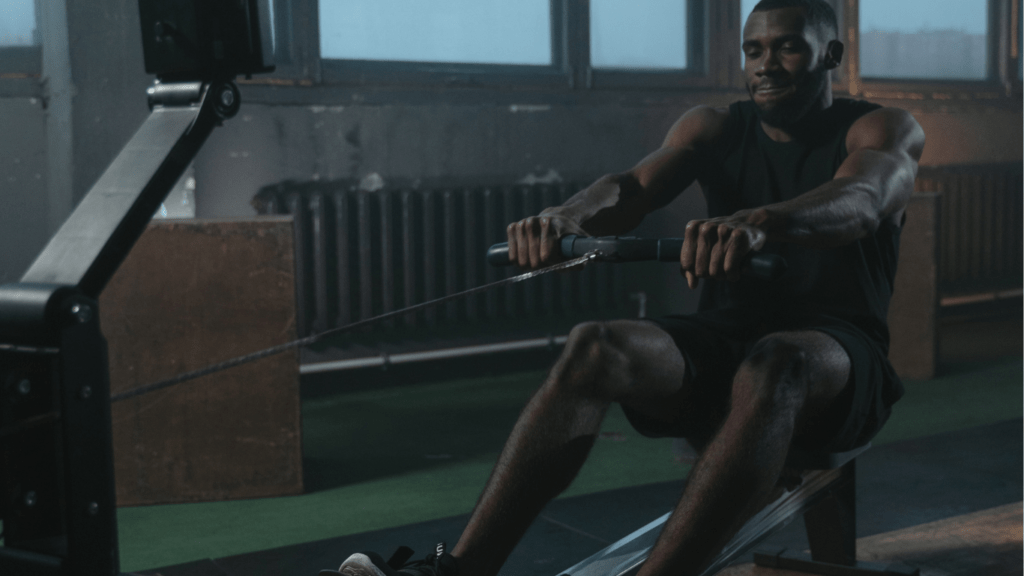Understanding Rowing Machines
Rowing machines offer a comprehensive workout targeting multiple muscle groups. They provide advantages over other equipment due to their design and functionality.
Types of Rowing Machines
Different types of rowing machines emphasize unique resistance mechanisms, affecting the workout experience:
- Air Rowers: Generate resistance through a fan as you pull the handle. The harder you row, the greater the resistance. They’re popular for producing smooth strokes.
- Magnetic Rowers: Utilize magnetic braking systems, providing a quieter rowing experience. Resistance levels are adjustable, making them versatile.
- Water Rowers: Use water in a tank for resistance, mimicking the sensation of rowing on water. They’re favored for offering a realistic rowing feel.
Each type offers specific benefits based on its resistance mechanism and user preference.
Benefits of Using Rowing Machines
Rowing machines deliver a low-impact, full-body workout, engaging legs, core, and arms. They’re effective for cardiovascular and strength training:
- Cardiovascular Health: Rowing raises heart rate and improves cardiovascular endurance, making it an excellent aerobic exercise.
- Strength Building: Regular rowing strengthens muscles, particularly in the back, legs, and core, contributing to overall fitness enhancements.
- Versatility: Suitable for all fitness levels, adjusting resistance or intensity meets everyone from beginners to experienced athletes.
Incorporating a rowing machine into workouts offers balanced, efficient exercise, benefiting body condition and health.
Criteria for a Full-Body Workout

Rowing machines excel in delivering comprehensive workouts. Recognizing key elements helps evaluate their effectiveness.
Muscle Groups Targeted
Rowing machines engage multiple muscle groups simultaneously. The motion works the quadriceps, hamstrings, glutes, and calves as legs drive the stroke. The core, including abs and obliques, stabilizes the body during the row. Finally, the back, shoulders, and arms, including biceps and triceps, complete the stroke, ensuring an upper-body workout.
Cardiovascular Benefits
Rowing provides substantial cardiovascular benefits through sustained rhythmic activity. This continual motion elevates heart rate efficiently, improving cardiorespiratory fitness. Engaging larger muscle groups boosts oxygen consumption, making rowing an effective aerobic exercise.
Joint Impact
Rowing machines offer low-impact exercise, making them ideal for minimizing joint stress. Movements are fluid and smooth, reducing the risk of injury compared to high-impact activities. This design allows users with joint concerns to engage in comprehensive workouts without strain.
Top Rowing Machines Compared
Rowing machines excel in providing full-body workouts, engaging various muscle groups and offering cardiovascular benefits. Understanding different resistance types helps in making informed decisions.
Air Resistance Rowers
Air resistance rowers use a flywheel to generate resistance, increasing with greater stroke intensity. They offer a smooth rowing experience, resembling on-water rowing. Concept2 Model D is a popular example, known for its durability and performance tracking capabilities. These machines create a more dynamic workout, ideal for athletes seeking variable intensity.
Magnetic Resistance Rowers
Magnetic rowers use magnets to create resistance, providing a quieter experience suitable for home use. They offer adjustable resistance levels, allowing users to tailor workouts to specific fitness goals. The Sunny Health & Fitness SF-RW5515 Magnetic Rower is an example, valued for its compact design and affordability. These rowers are favored for consistent resistance, especially beneficial in maintaining pace.
Water Resistance Rowers
- Water resistance rowers offer a realistic rowing sensation, using water to create resistance.
- The resistance increases with stronger pulls, simulating actual rowing conditions.
- WaterRower Natural Rower is a prime example, praised for its aesthetic appeal and eco-friendly materials.
- These machines provide a smooth, relaxing workout, appealing to those who appreciate the natural resistance feel.
- Each type of rowing machine offers unique benefits, catering to different preferences and workout goals.
- Analyzing personal needs can help in selecting the best rowing machine for a comprehensive full-body workout.
Factors to Consider When Choosing
Selecting the ideal rowing machine depends on several essential factors. Understanding these can guide you to make an informed decision.
Space and Storage
I measure the available space in my home before choosing a rowing machine. Compact models or those with folding capabilities, like the Concept2 Model D, save space in smaller areas. Some machines require an area of 6 feet by 2 feet to operate smoothly.
Budget Considerations
Setting a budget guides my options when choosing a rowing machine. Prices range from $100 for basic models to over $1,000 for high-end machines. I consider initial investment and potential long-term savings by comparing gym memberships versus home equipment.
User Experience and Features
I evaluate ergonomic design and user-friendly features to ensure a satisfying user experience. Adjustable footrests, cushioned seats, and intuitive display panels enhance comfort. Machines with advanced features like Bluetooth connectivity allow me to track progress efficiently.

 Brodie Cani’s contributions to Make Athlete Action have been instrumental in delivering cutting-edge sports science news to the platform’s audience. With a background in sports research, Brodie is dedicated to translating the latest scientific advancements into actionable insights for athletes. His work ensures that readers stay informed about the newest trends and discoveries that can impact their training and performance. Brodie’s dedication to accuracy and relevance has helped shape Make Athlete Action into a reliable resource for anyone looking to stay ahead in the ever-evolving world of sports science.
Brodie Cani’s contributions to Make Athlete Action have been instrumental in delivering cutting-edge sports science news to the platform’s audience. With a background in sports research, Brodie is dedicated to translating the latest scientific advancements into actionable insights for athletes. His work ensures that readers stay informed about the newest trends and discoveries that can impact their training and performance. Brodie’s dedication to accuracy and relevance has helped shape Make Athlete Action into a reliable resource for anyone looking to stay ahead in the ever-evolving world of sports science.